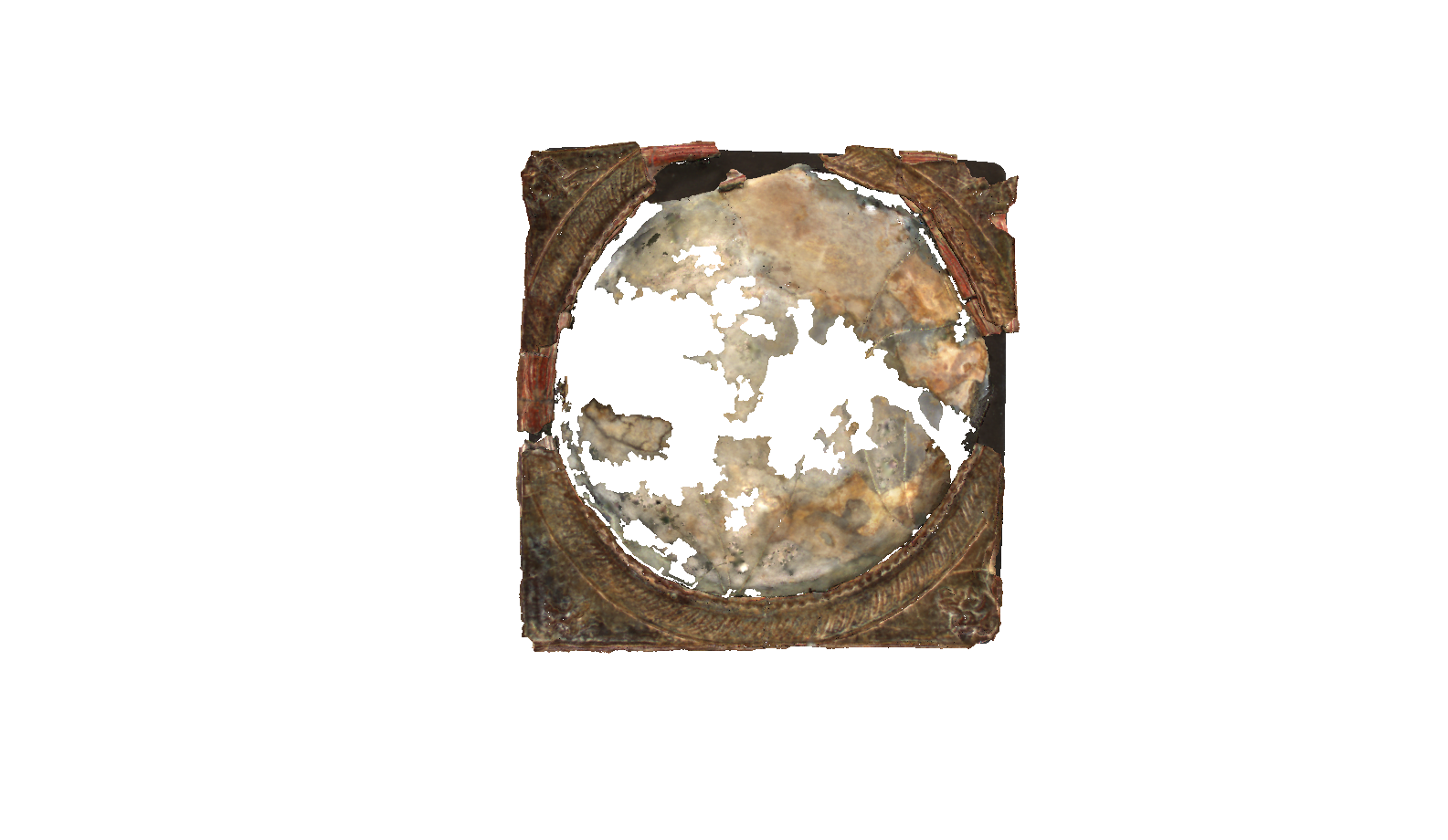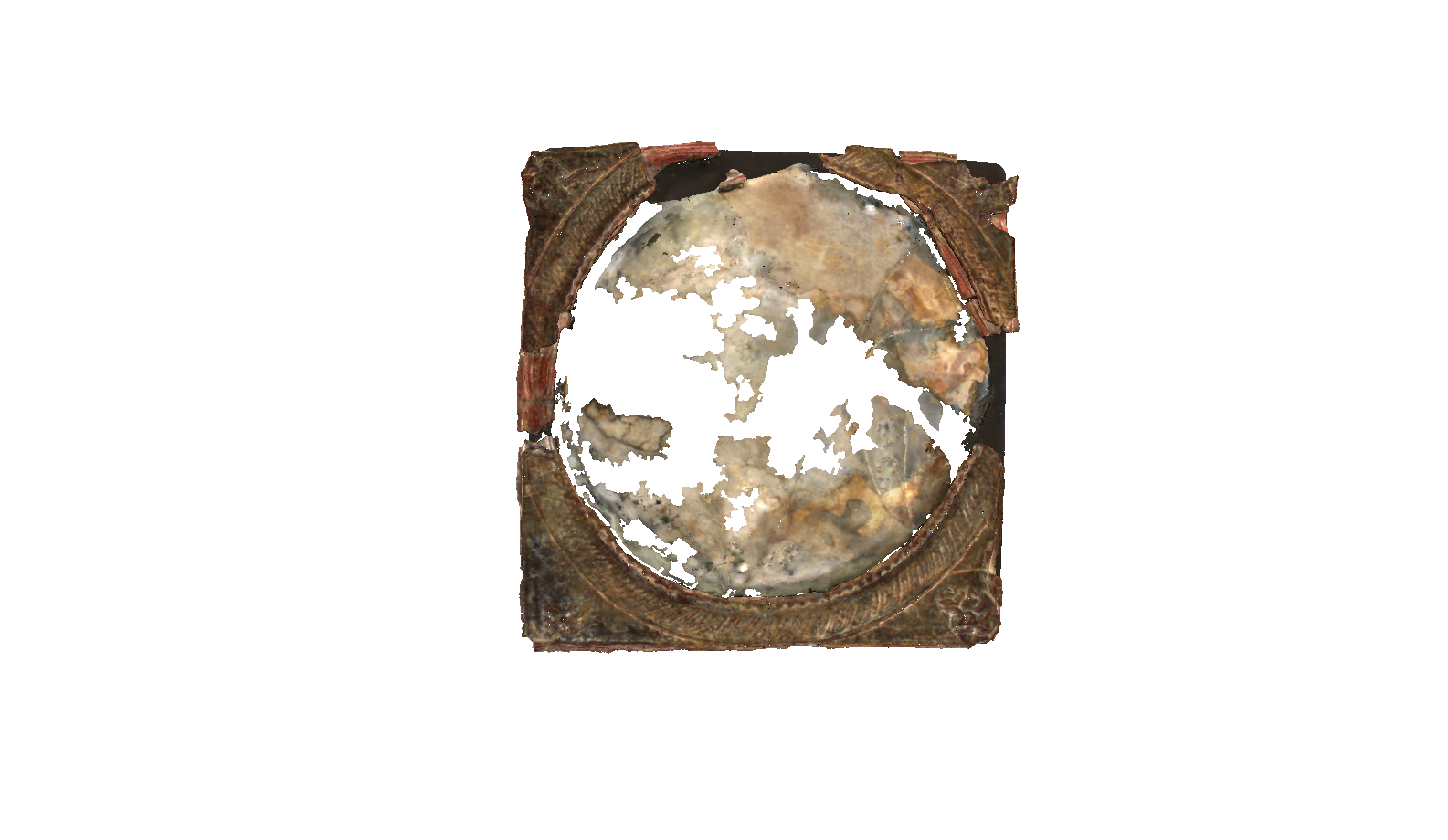Description
Click on the image to go full screen
The artefact was found in Padua, during a 2015 urban archaeology excavation in an area at 195, Corso Vittorio Emanuele I.
The small mirror belongs to a yet little-researched class which, as of today, is made up of about 2000 specimens dated from between the 1st century AD and the Byzantine period, peaking in the Mid-Imperial Roman Period.Where preserved, their glass surface is irregular and convex, backed by a thin coat to provide a reflective effect. Three concentric bands of different width are arranged around the central opening: a narrow beaded band (1.3 mm mean width), a wider band with an oblique line decoration (3.9 mm mean width) and a smooth outer cord that touches the outer square rim (0.5 mm mean width). The spaces at the corners are occupied by male heads: top right is a left-facing adult or mature Silenus (Papposilenus) (h 5.9 mm; w. 5 mm); bottom right is a young Bacchus or Satyr, also facing left (h. 6.1 mm; w. 4.2 mm); bottom left is Pan facing right (h. 8.5 mm; w. 5.7 mm). The top left figure is difficult to identify due to the many missing sections; the unaltered areas suggest a right-turned bearded man wearing a wide-brimmed hat (h. 4.9 mm). The distances between these decorative elements are as follows: 39.9 mm from the base of the top right head to the top of the bottom right one; 51.3 mm from the top of the bottom right head to the tips of the horns of the bottom left head; 42.5 mm from the tip of the horns of this figure to the base of the top left head; 47 mm from the base of the top left head to the base of the top right head.

